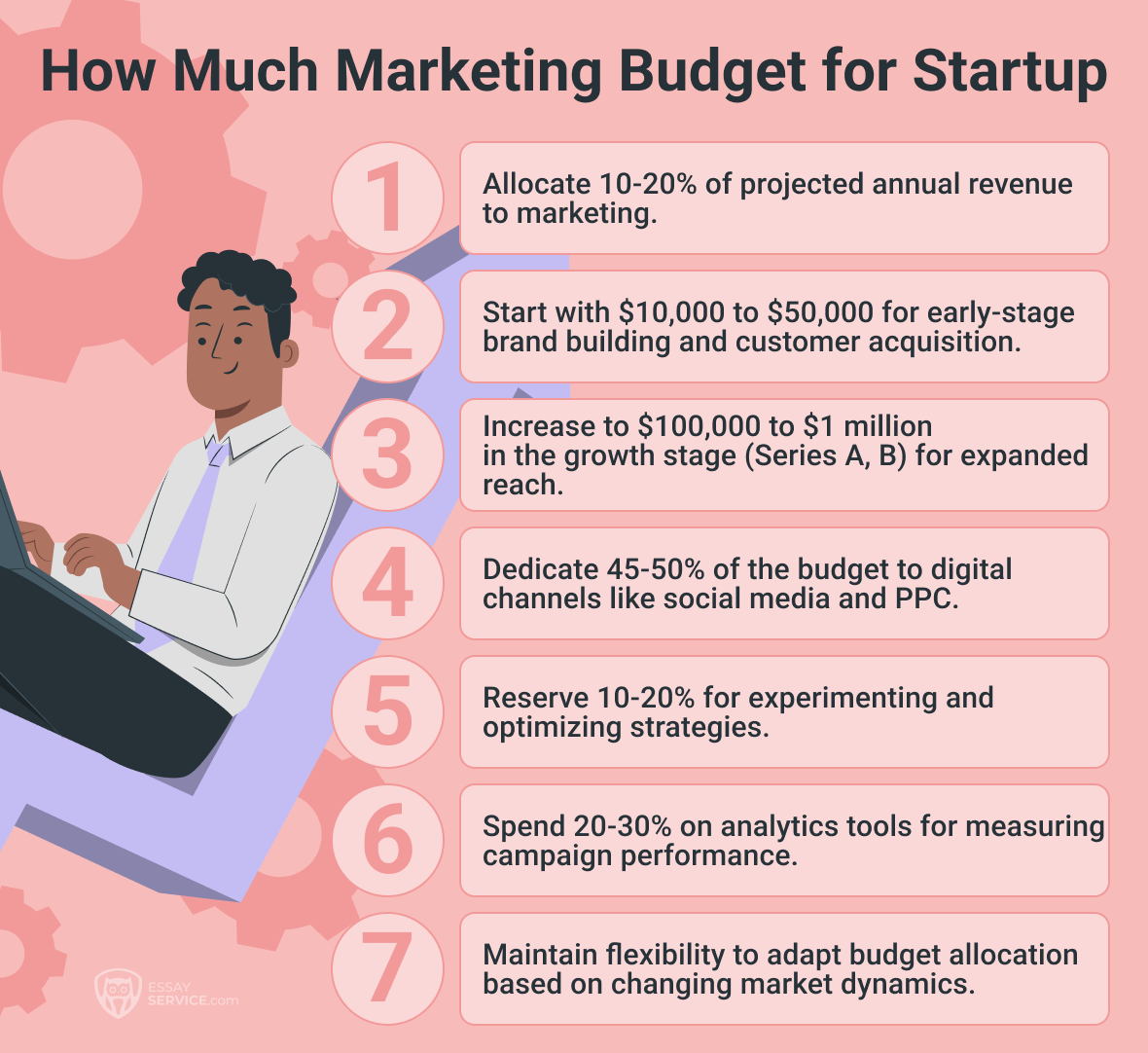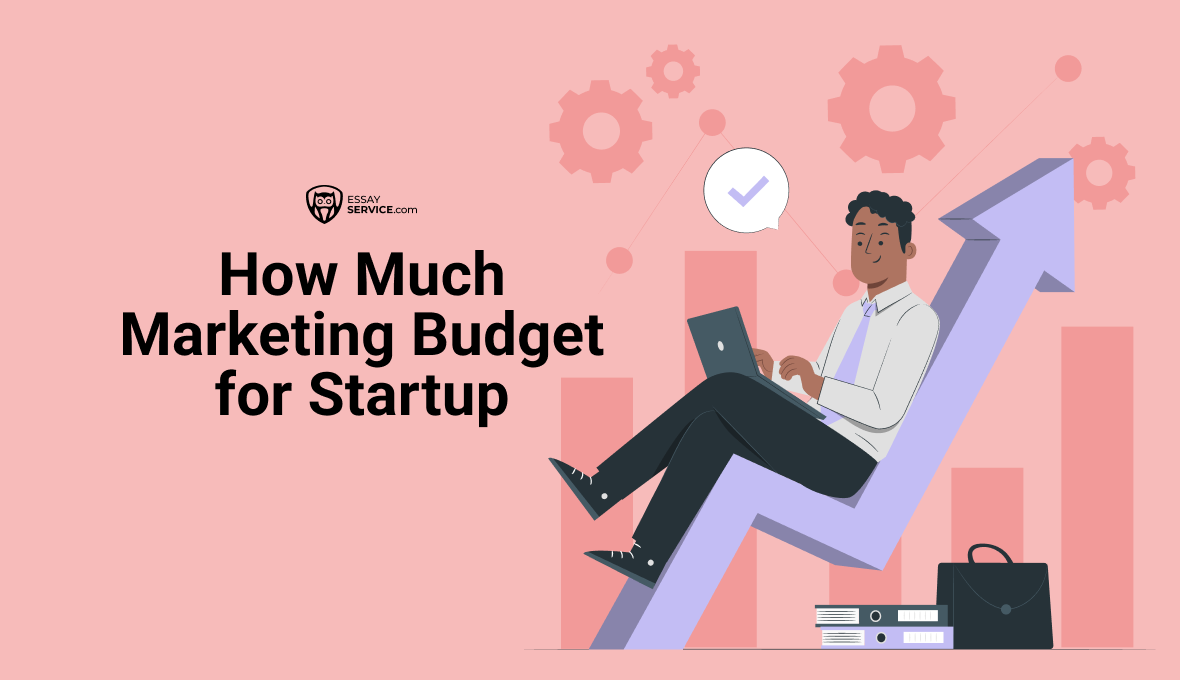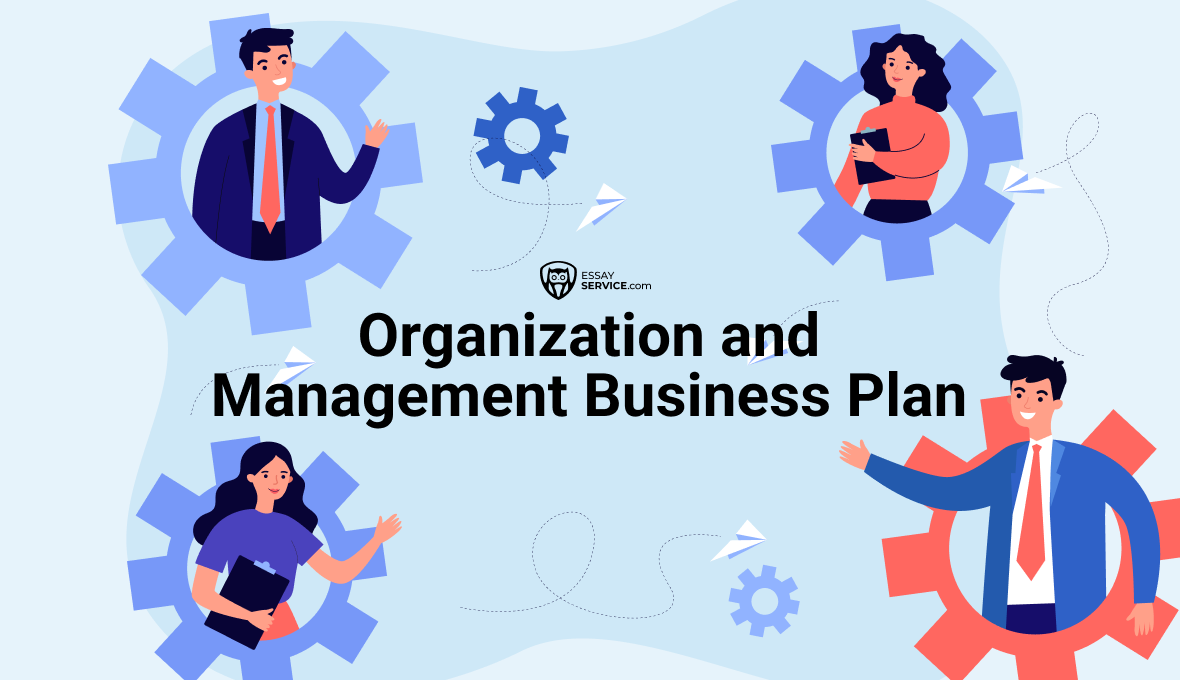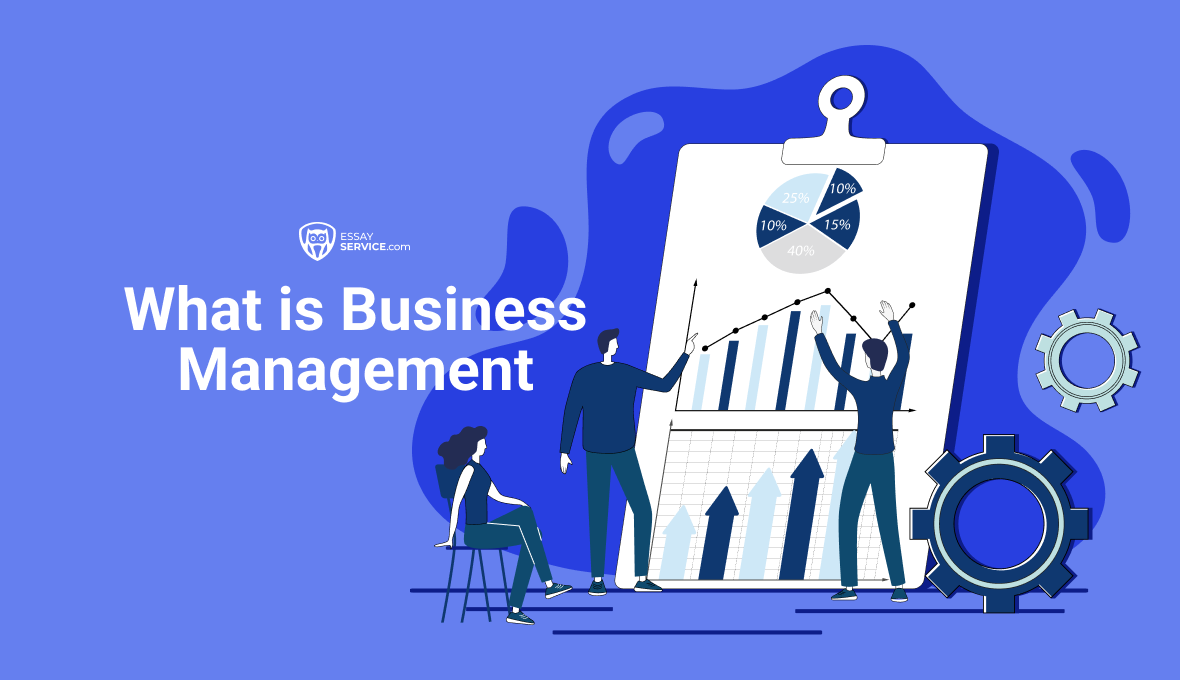When you're running a startup, every choice you make can make or break your success. And one of the biggest decisions? How you're going to spend your money, especially when it comes to marketing.
In this article, we're going to talk about why your marketing budget for your startup matters so much.
Marketing Budgets Startup Ventures Need at Different Growth Stages
Here's a breakdown of the typical startup's marketing budget at different growth stages:
Early-Stage Startups (Pre-Series A)
At this phase, resources are often limited, and the primary goal is to establish a foothold in the market while maximizing efficiency.
A marketing budget for early-stage startups tends to be modest, focusing on cost-effective strategies such as content marketing, social media engagement, and targeted digital advertising.
The emphasis is building brand awareness, generating initial leads, and gathering valuable customer feedback to refine products or services.
Investments may also be allocated to creating a compelling website and basic branding materials that effectively convey the startup's value proposition.
Growth Startups (Series A, B)
As startups secure funding and enter the growth phase, marketing budgets typically expand to fuel scalable customer acquisition and market expansion efforts.
Investments may increase in channels proven to deliver results, such as scaling digital advertising campaigns, implementing robust SEO strategies, and investing in email marketing automation. Additionally, funds may be allocated towards hiring specialized marketing talent or outsourcing services to execute more sophisticated campaigns.
The focus shifts towards driving revenue growth, capturing market share, and solidifying the startup's position within its target market segments.
Mature Startups / Late-stage Startups & Beyond (Series C, D+)
For startups that have reached maturity or attained significant market traction, marketing budgets reflect a more strategic approach to sustaining momentum and outpacing competitors.
At this stage, a startup's marketing budget may encompass diverse marketing initiatives, including comprehensive omnichannel campaigns, partnerships, event sponsorships, and even traditional advertising channels.
With a deeper understanding of their target audience and market dynamics, mature startups may allocate substantial resources towards customer retention, loyalty programs, and brand-building activities to solidify their market leadership position and explore new growth opportunities, such as international expansion or product diversification.
Need Help with Marketing Assignments?
You won’t find better experts than ours!
Factors that Influence Your Marketing Budget
Business Goals and Objectives
Your marketing budget should align closely with your overall business goals and objectives. Whether increasing brand awareness, driving sales, or expanding into new markets, your budget allocation should support these objectives effectively.
Target Audience and Market Segmentation
Understanding your target audience and market segments is crucial for determining where and how to allocate your marketing funds. Different demographics and segments may require different approaches and channels, impacting budget distribution.
Competitive Landscape
Analyzing your competitors' marketing strategies and budgets can provide insights into industry standards and help you determine how much to invest to remain competitive.
Industry and Market Trends
Keeping abreast of industry and market trends enables you to anticipate shifts in consumer behavior, emerging technologies, and new marketing channels, influencing your budget allocation accordingly.
Product Lifecycle Stage
The stage of your product or service lifecycle can dictate your marketing budget needs. Launching a new product may require a significant upfront investment in awareness-building, while mature products may focus more on retention and loyalty programs.
Marketing Channels and Tactics
Different marketing channels and tactics have varying costs and effectiveness. Budget allocation should consider the optimal mix of channels, such as digital advertising, content marketing, social media, and traditional advertising, based on their performance and relevance to your audience.
Seasonality and Timing
Seasonal trends and timing can impact marketing effectiveness and budget requirements. For example, retail businesses may need to allocate more funds during peak holiday seasons, while others may adjust budgets based on cyclical demand patterns.
Marketing Technology and Tools
Investing in marketing technology and tools, such as CRM systems, analytics platforms, and automation software, can enhance efficiency and effectiveness but may require budget allocation for implementation and ongoing maintenance.
Return on Investment (ROI) Expectations
Your expected return on investment influences the amount you're willing to invest in marketing. Setting realistic ROI expectations helps ensure your budget allocation is sustainable and profitable.

How to Calculate Marketing and Sales Expenses?
here's how you can calculate marketing and sales expenses for three different models:

In-House Model
In the in-house model, you'll calculate expenses based on the costs associated with hiring and maintaining an internal marketing and sales team. This includes salaries, benefits, training, software licenses, and other overhead expenses directly related to your team's operations.
Additionally, it factors in costs for marketing campaigns, advertising, promotions, events, and sales materials. Divide these expenses by the number of months or years to determine your monthly or annual marketing and sales budget.
Full-Service Agency
When working with a full-service agency, your expenses will primarily consist of the agency's fees and any additional costs for outsourced services. The agency's fees typically include a retainer or project-based fee, which covers strategy development, creative services, campaign execution, and performance monitoring.
Additional costs may include media buying fees, production costs, and expenses for specialized services like SEO, PPC management, or content creation. Ensure to factor in any hidden or variable costs when negotiating the agency contract to estimate your total marketing and sales expenses accurately.
Blended Model
In a blended model, you'll combine in-house and agency services elements to optimize your marketing and sales efforts. Calculate expenses by accounting for both internal team costs and agency fees.
This includes salaries, benefits, overhead for your in-house team, and the fees and additional costs associated with outsourcing certain services to the agency. Based on your business needs, budget constraints, and desired level of expertise, determine the optimal balance between internal and external resources.
How to Handle Marketing Tasks Quickly and Effectively?
Use a professional service to deal with all types of assignments.
Costs of a Marketing Campaign
When planning the costs of a marketing campaign for a startup, several factors need consideration, ranging from strategy development to implementation and measurement.
Strategy Development
- Research and analysis to understand the target audience, market trends, and competitors.
- Development of a marketing plan outlining goals, objectives, and tactics.
- Creation of buyer personas and segmentation strategies.
Creative Assets
- Design and development of branding materials, including logos, graphics, and brand guidelines.
- Content creation for various channels, such as website copy, blog posts, videos, and social media content.
- Production of visual assets like images, infographics, and videos for use in marketing campaigns.
Advertising and Promotion
- Costs associated with paid advertising channels such as PPC (pay-per-click), display ads, social media ads, and sponsored content.
- Promotion expenses for events, trade shows, sponsorships, and partnerships.
- Email marketing costs, including software subscriptions, list management, and content creation.
Technology and Tools
- Investment in marketing automation platforms, CRM (customer relationship management) systems, analytics tools, and other software solutions.
- Subscription fees for third-party services used in campaign execution and measurement.
- Development or customization of websites, landing pages, and other digital assets.
Staffing and Outsourcing
- Salaries, benefits, and overhead for internal marketing team members or freelancers.
- Costs associated with hiring external agencies or consultants for specialized services like SEO, content marketing, or graphic design.
- Training and professional development expenses to enhance team skills and capabilities.
Measurement and Analytics
- Implementation of tracking tools and analytics platforms to monitor campaign performance and ROI.
- Costs associated with data analysis, reporting, and optimization efforts.
- Investment in market research or surveys to gather feedback and insights from target customers.
Contingency and Miscellaneous
- Buffer funds for unexpected expenses or adjustments needed during the campaign.
- Miscellaneous costs such as travel expenses, printing materials, or software upgrades.
Marketing Technology and Platform Expenses
Investing in marketing technology is as essential for startups as oxygen is for breathing.
Picture this: a fledgling e-commerce venture diving headfirst into HubSpot's marketing automation suite, automating email campaigns to welcome new customers, upsell products, and re-engage dormant leads – all while tracking every click and conversion like a hawk.
Meanwhile, a burgeoning SaaS startup harnesses the power of Salesforce's CRM, seamlessly managing leads, forecasting sales pipelines, and delivering personalized customer experiences that leave competitors in the dust. But let's not forget the analytics juggernaut, Google Analytics, which acts as a digital Sherlock Holmes, uncovering website traffic sources, user behavior patterns, and the elusive ROI of every marketing dollar spent, guiding startups towards the treasure trove of growth opportunities.
Yet, amidst these tech wonders, there's a catch: the price tag. Subscriptions, customizations, and training costs can drain the coffers faster than you can say "ROI."
Still, for startups willing to navigate these financial waters, the payoff – a well-oiled marketing machine driving exponential growth – can be nothing short of legendary.
Summary
On average, a tech startup in its early stages may require $500,000 to $1 million in initial funding for product development, marketing, and operational expenses.
However, this figure can vary significantly based on factors such as the complexity of the product, market competition, and geographical location. Subsequent funding rounds, such as Series A or Series B, may see startups raising several million dollars, with some reaching tens or even hundreds of millions, depending on growth projections and investor interest.
For example, a tech startup aiming for rapid expansion into new markets or scaling up its operations may need upwards of $10 million or more to fuel its growth trajectory effectively.
- How big should our Marketing budget be? (n.d.). Startups.com. https://www.startups.com/community/questions/3052/how-much-should-my-marketing-budget-be
New posts to your inbox!
Your submission has been received!



